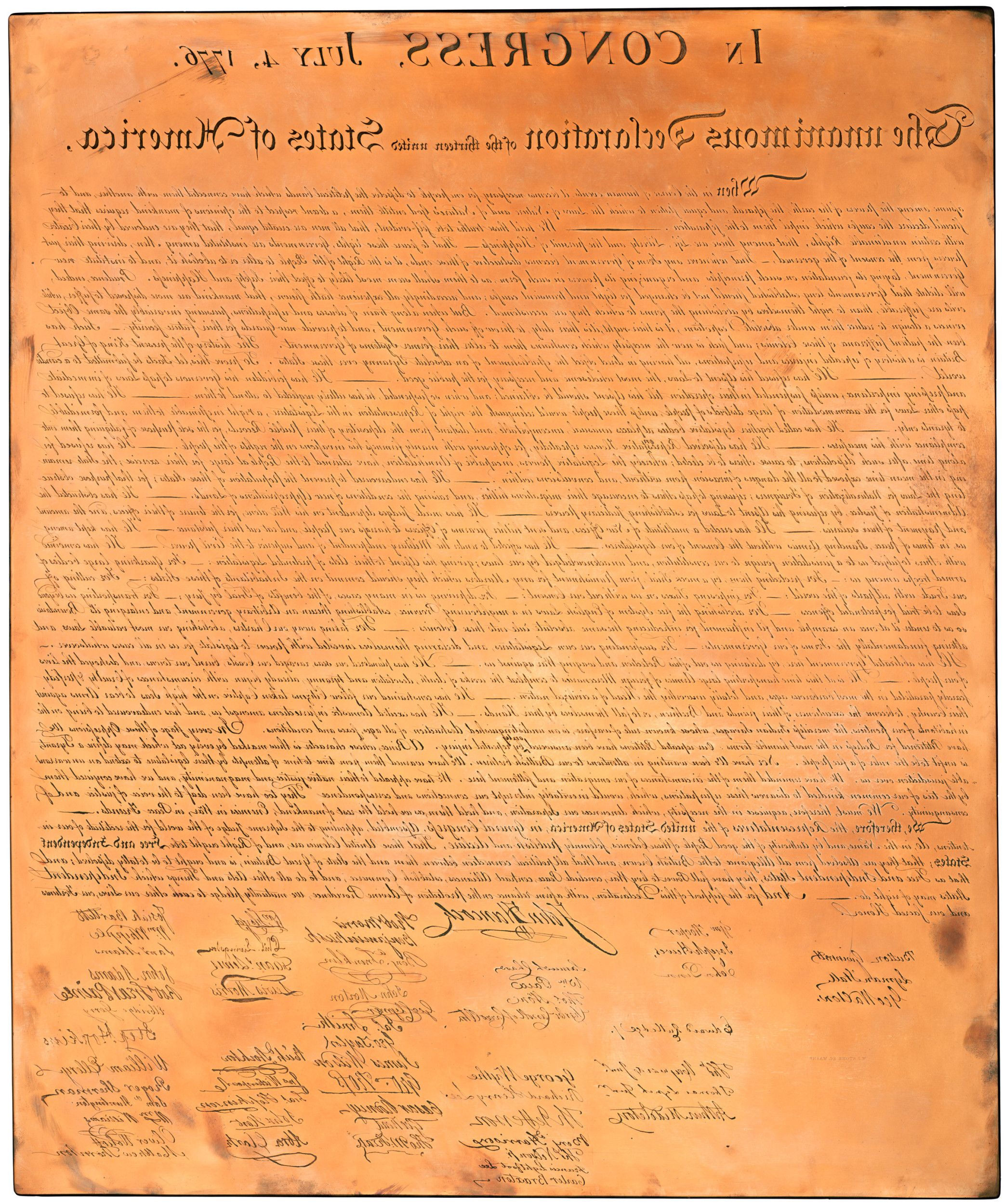Celebrating America's Bicentennial in 1976
Finding a Sequence
All documents and text associated with this activity are printed below, followed by a worksheet for student responses.Introduction
The original Declaration of Independence is faded and hard to read because of its many travels, locations, and storage conditions before finding a permanent home at the National Archives. Less than 50 years after it was written, Secretary of State John Quincy Adams (future president) feared it wouldn't be able to be seen much longer and hired a printer to make a replica copper engraving of it in 1820. Because copies were made from this copper plate, we know what the document looks like today.In 1976, on the Bicentennial (200th anniversary), a master printer uncovered the plate and made copies from it. You will see pictures of the document and photos of the printing process. Put them in order—use the "Details" and "Show Hints" buttons for help.
Name:
Class:
Class:
Worksheet
Celebrating America's Bicentennial in 1976
Finding a Sequence
Examine the documents in this activity. Put the corresponding document numbers in order using the list below. Write your conclusion response in the space provided.1
2
3
4
5
6
7
8
9
10
11
Hints for this Activity
- The wax cover had to be removed to make copies.
- After the ink was applied, excess had to be wiped off.
- Chalk was used to prep the inked plate for paper.
- Paper was laid on top of the inked plate.
- The first copy was made on the printing press.
- The Declaration of Independence as known today!
1
Activity Element
Placing Paper for Printing over the Printing Plate
Page 1
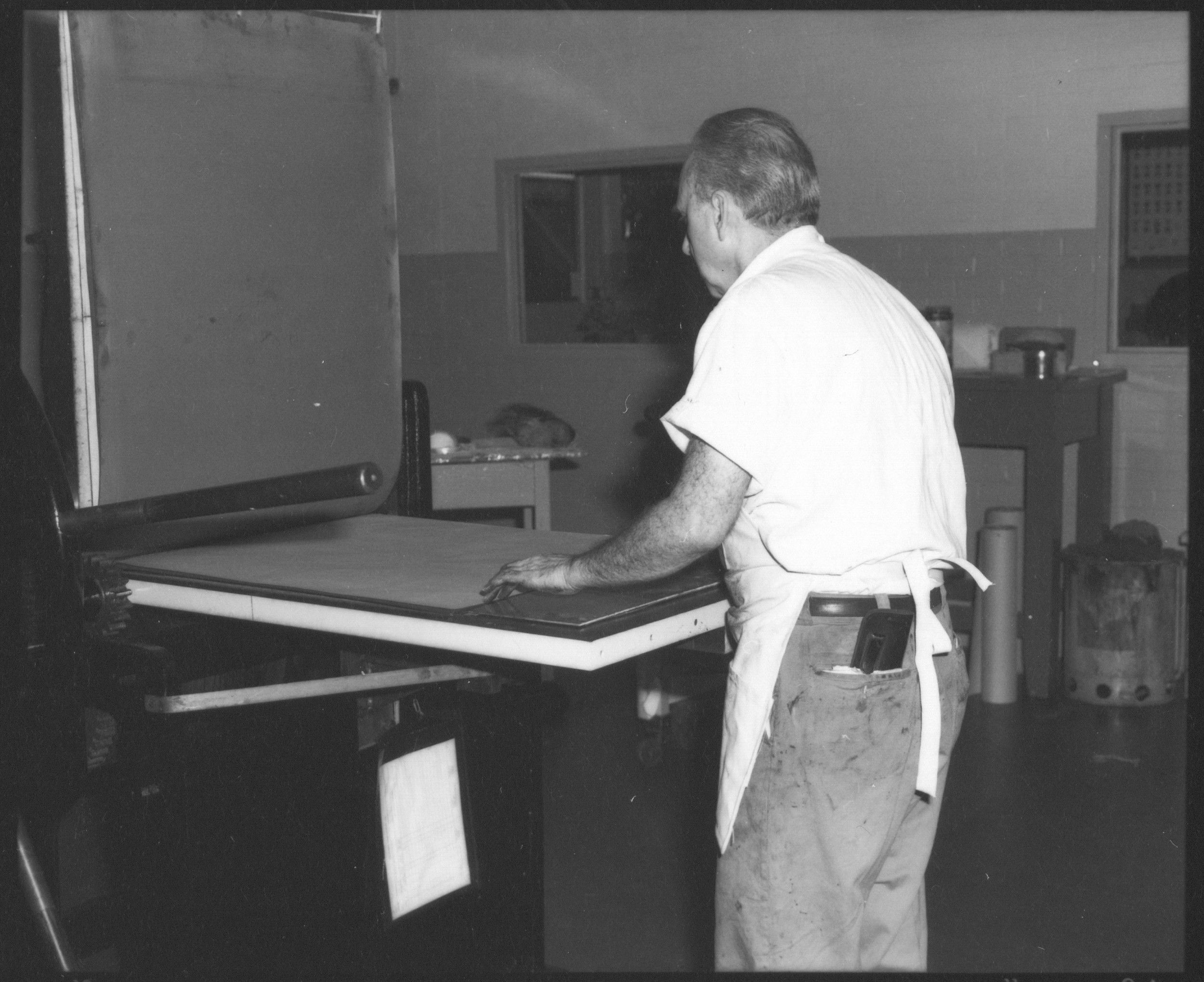
2
Activity Element
Application of Ink to Printing Plate
Page 1

3
Activity Element
Drafting the Declaration of Independence. The Committee - Franklin, Jefferson, Adams, Livingston and Sherman. Copy of engraving after Alonzo Chappel.
Page 1
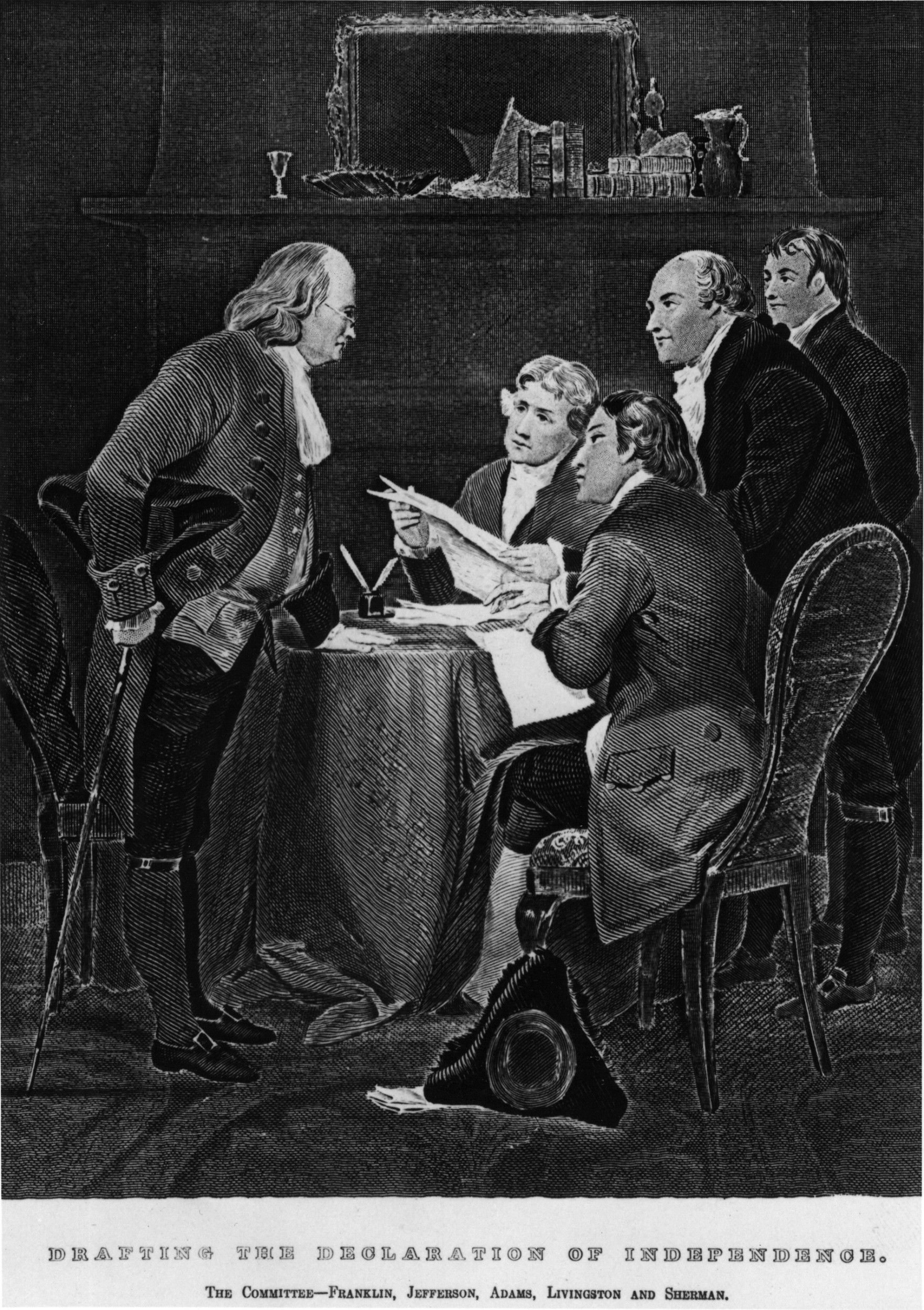
4
Activity Element
Inspection of the First Printed Paper Copy
Page 1
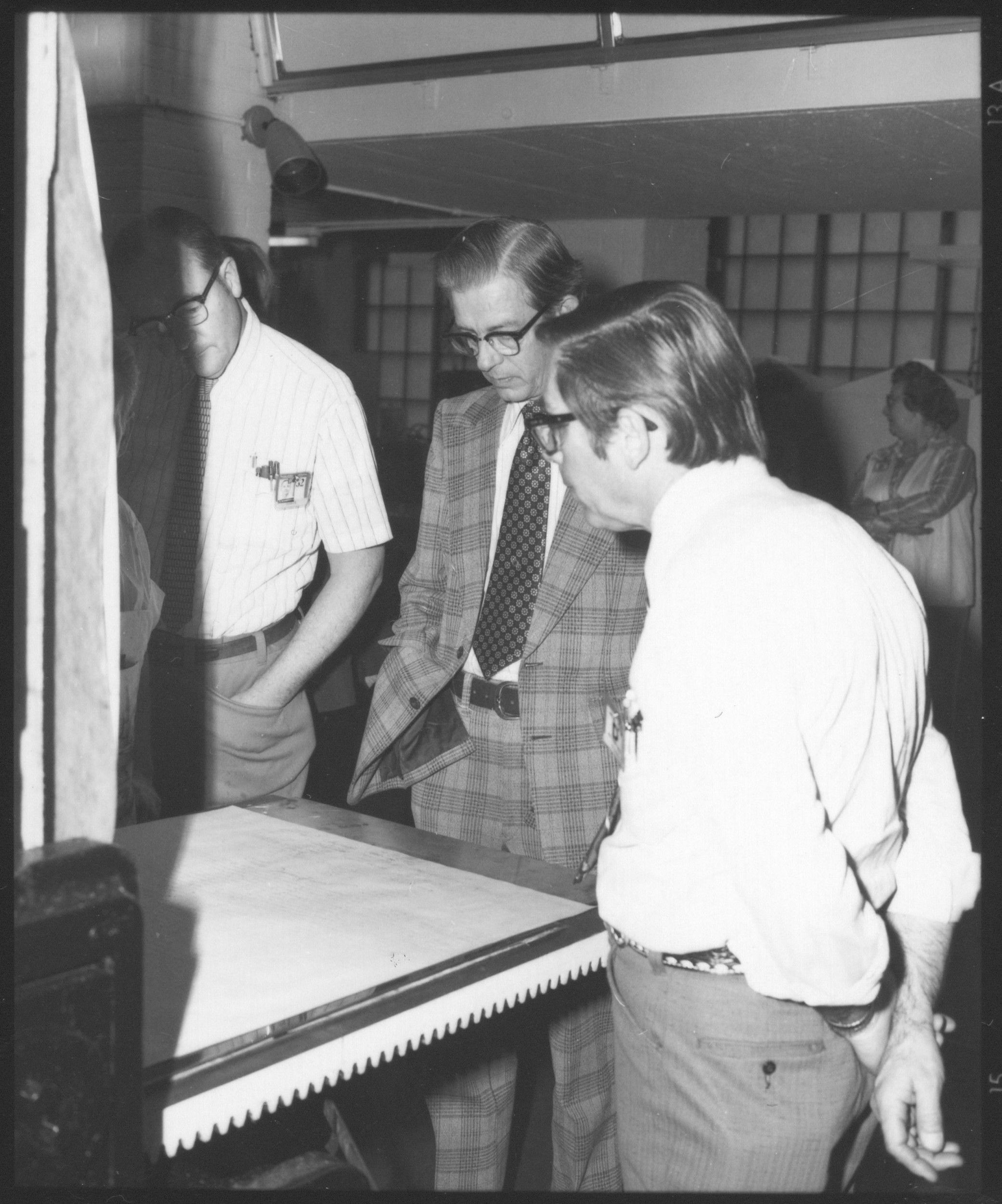
5
Activity Element
Engraving of the Declaration of Independence
Page 1
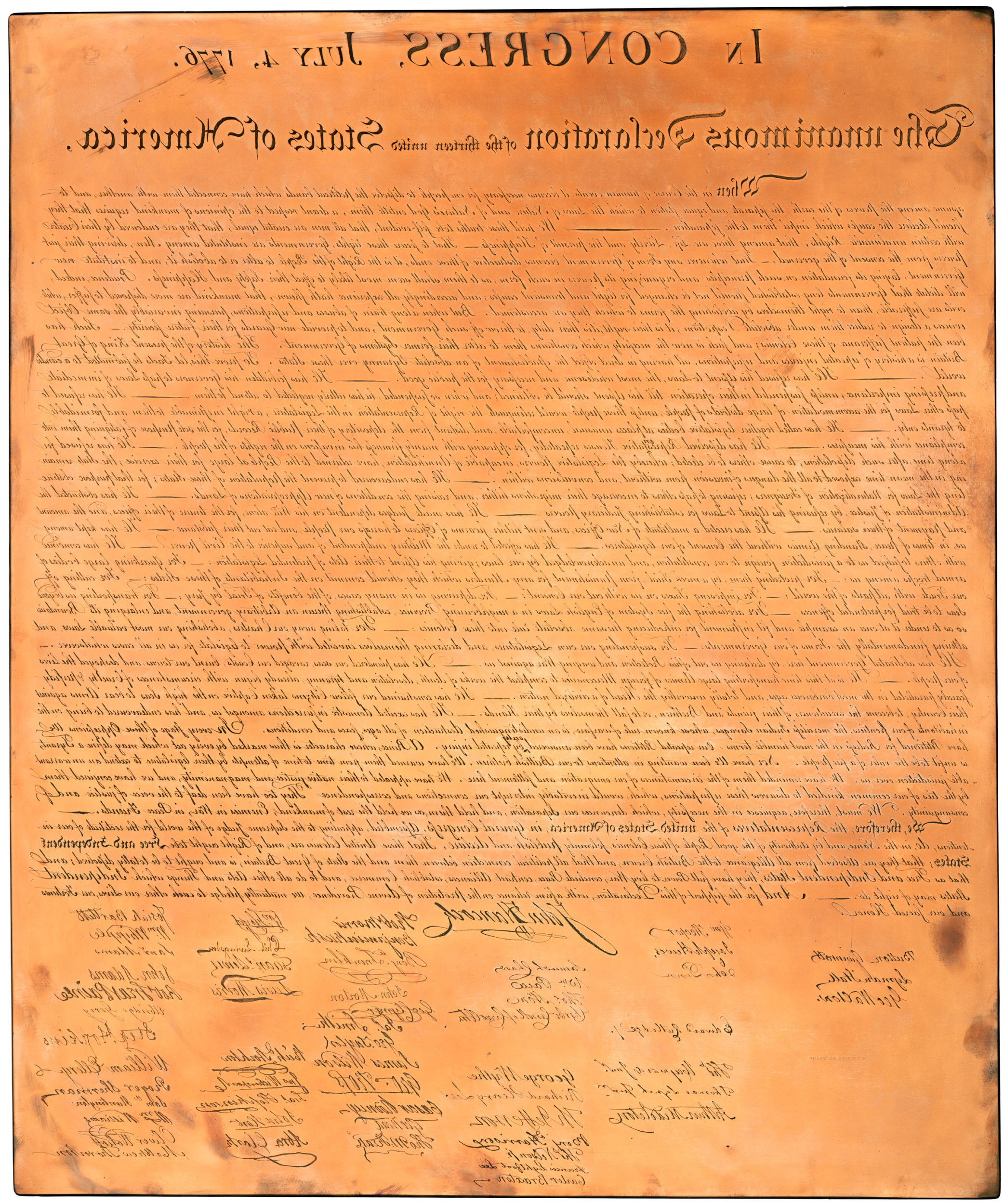
6
Activity Element
Printing of Subsequent Copies
Page 1
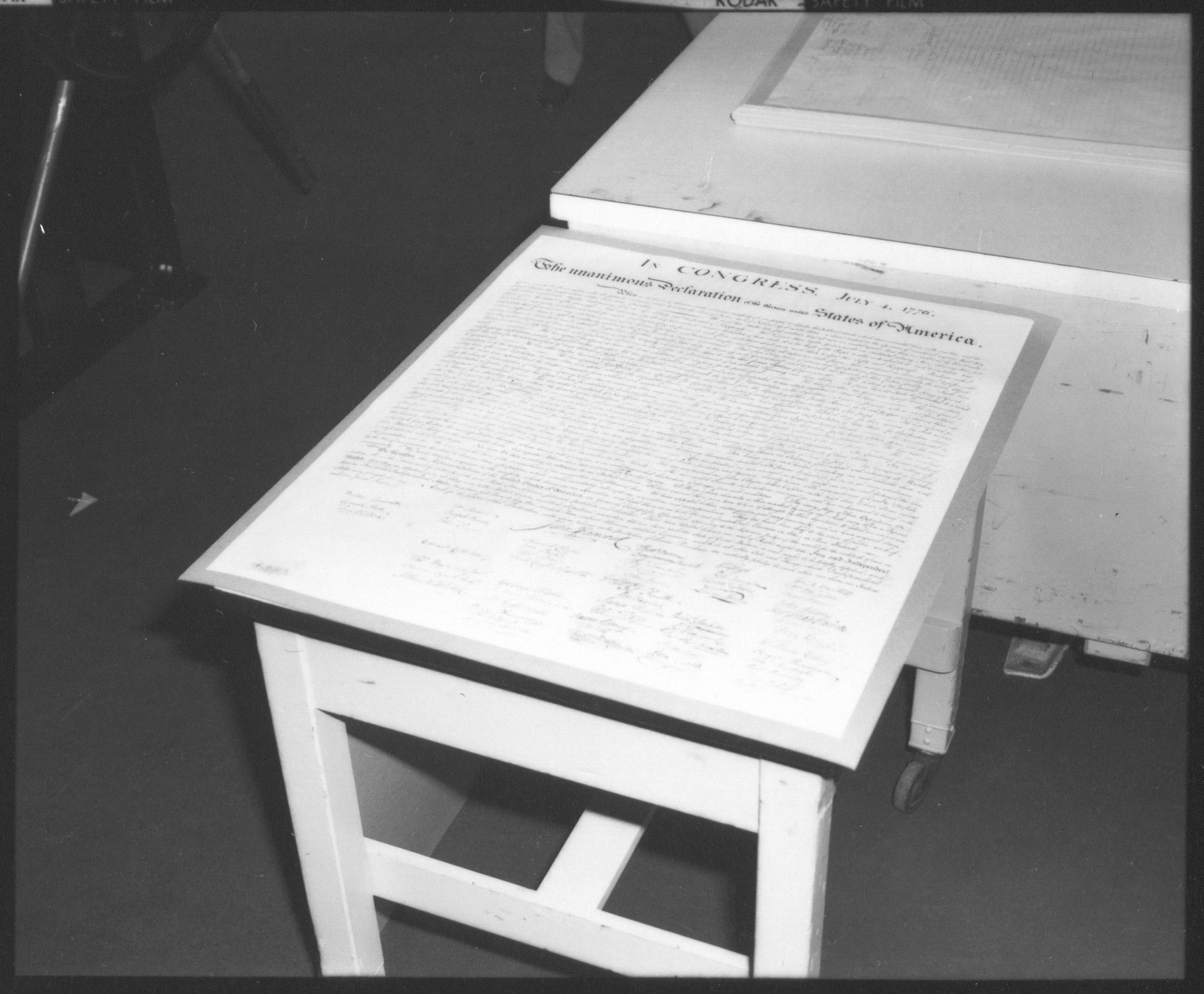
7
Activity Element
Print of the Declaration of Independence
Page 1
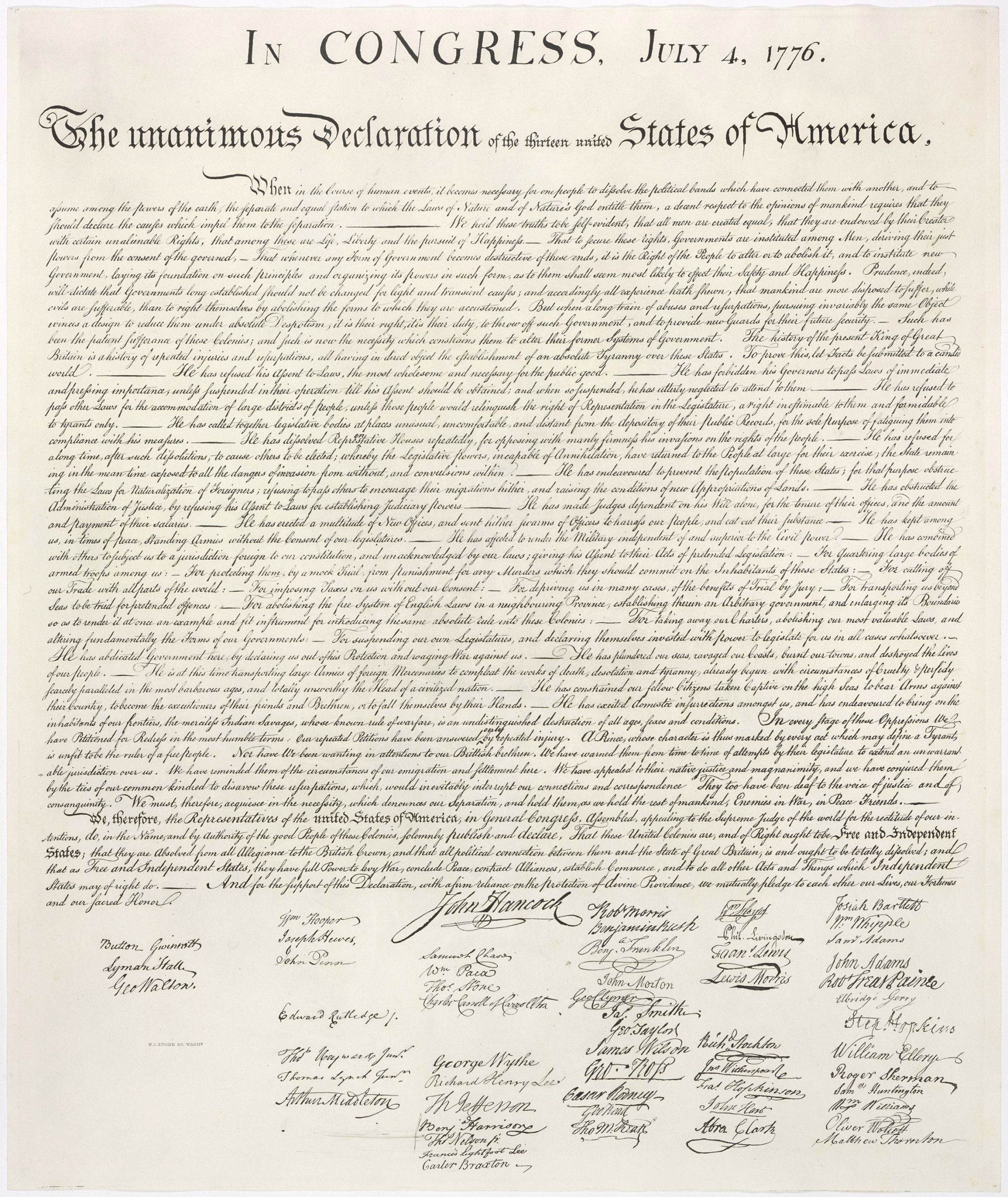
8
Activity Element
The Box on which the Plate was Heated to Soften the Wax and the Printer Mr. Angelo LoVecchio
Page 1

9
Activity Element
Rotating Press for Printing the First Paper Copy
Page 1
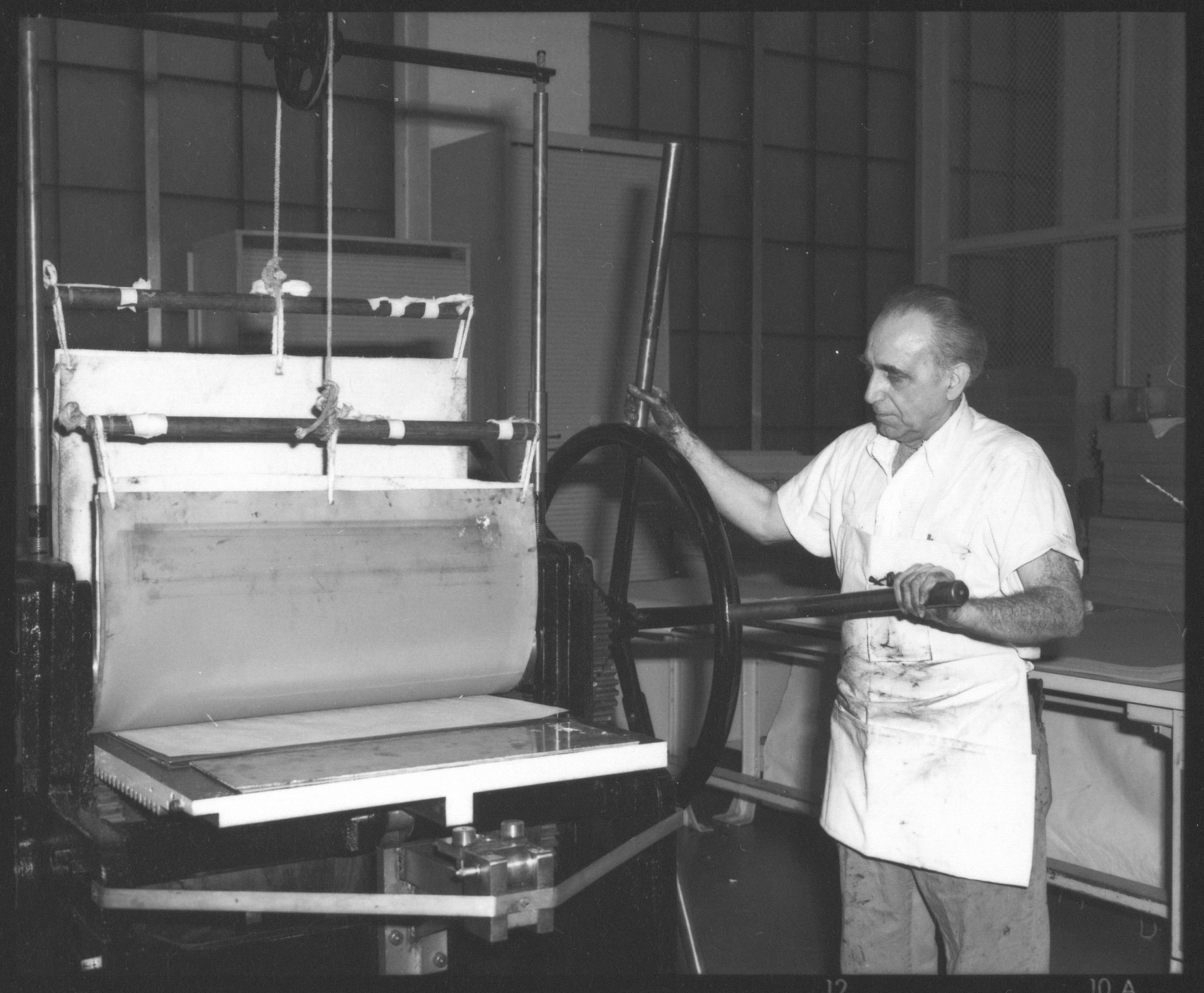
10
Activity Element
Chalk Used for Final Polishing and Ink Removal before Printing
Page 1
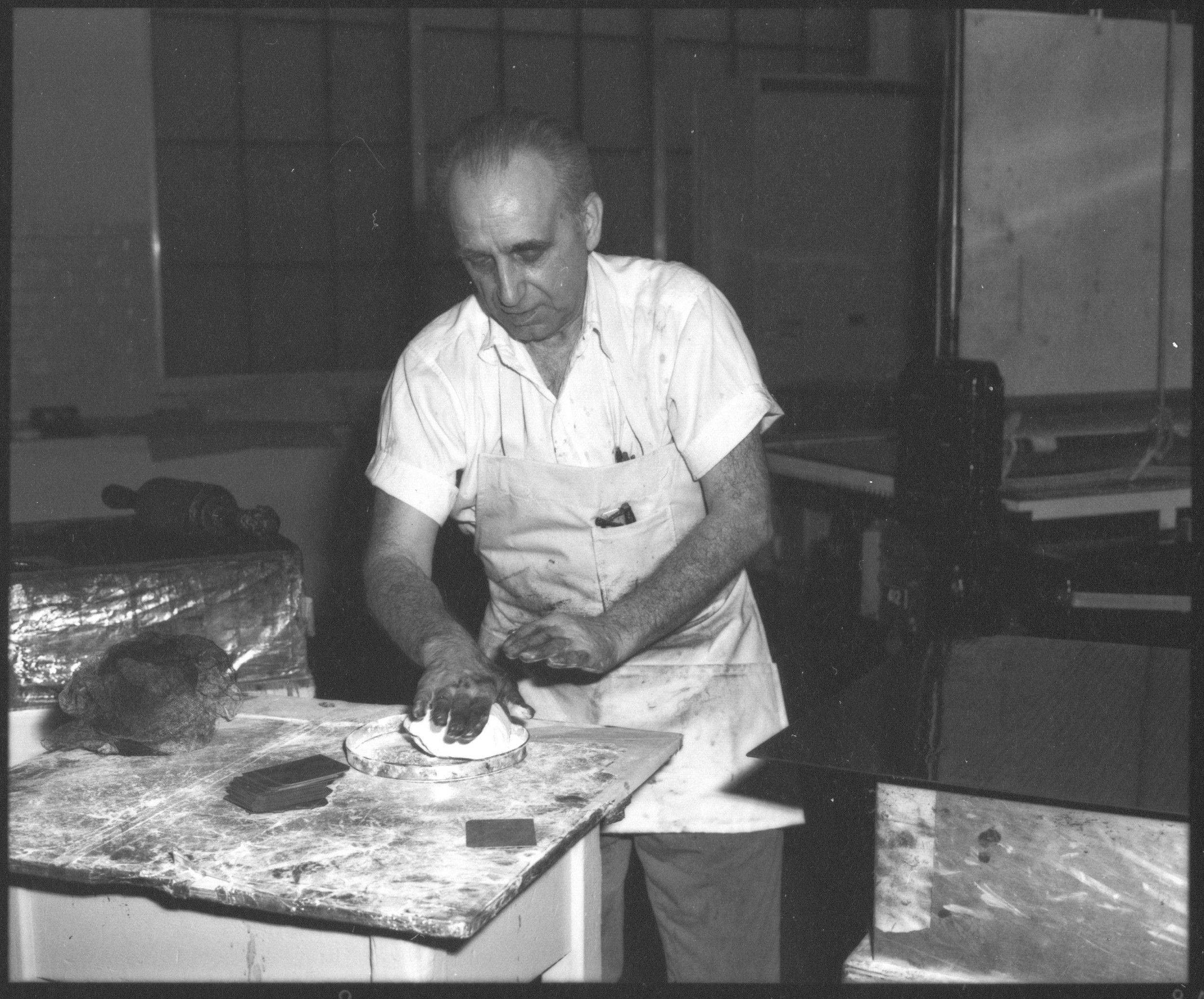
11
Activity Element
Removal of Additional Ink with Cheese Cloth
Page 1
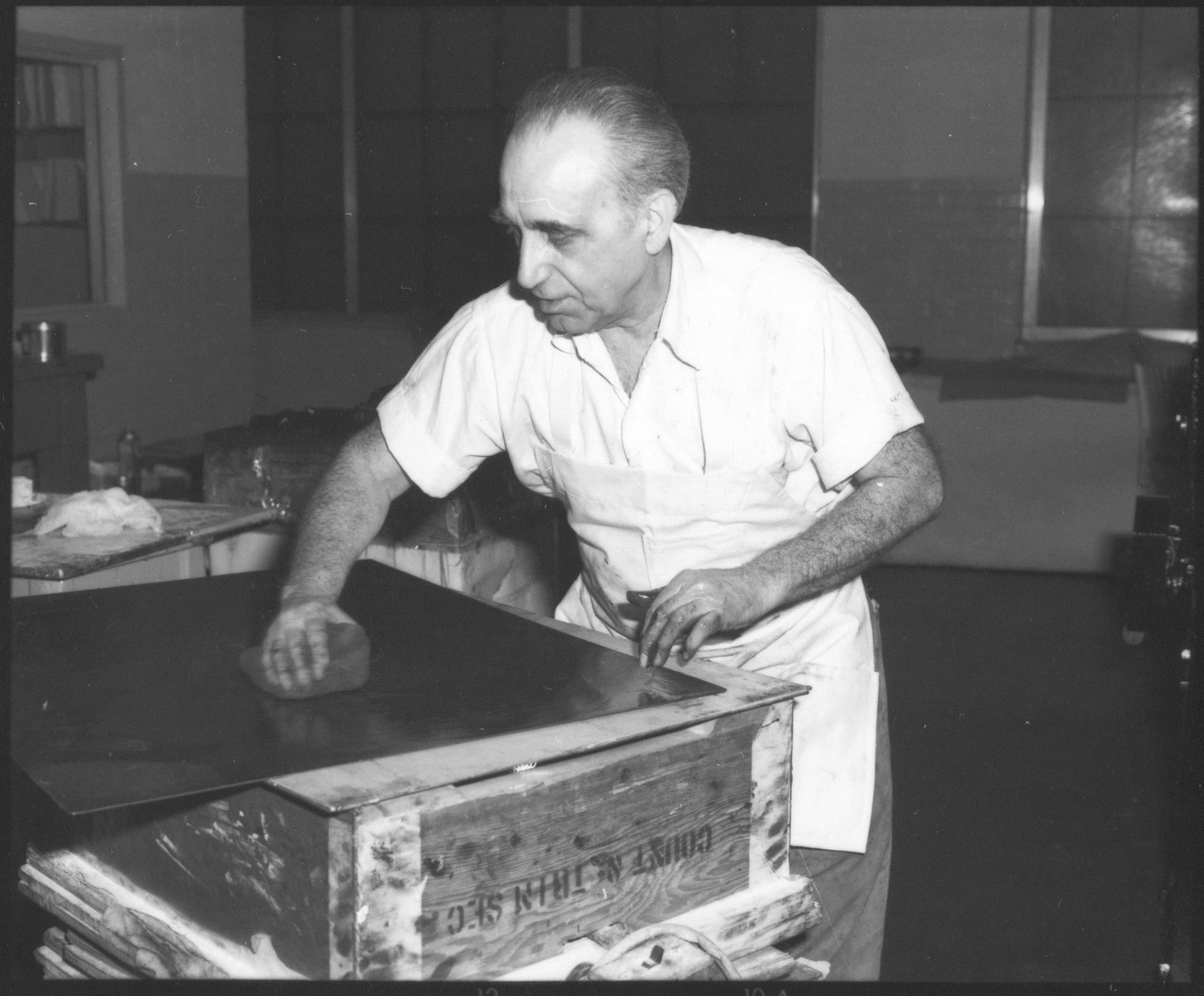
Conclusion
Celebrating America's Bicentennial in 1976
Finding a Sequence
Seven copies were made from the copperplate in 1976. One was sent to Independence Hall in Philadelphia, where the original Declaration of Independence was written. Other copies were stored at the National Archives.Answer the following questions:
- Why is it important to preserve documents from our history?
- Why do you think the government decided to celebrate the Bicentennial this way?
- Looking carefully at the wording of the document, what one line do you think is most important today? Why?
Your Response
Document
Rotating Press for Printing the First Paper Copy
4/13/1976
This primary source comes from the Records of the National Archives and Records Administration.
National Archives Identifier: 6922225
Full Citation: Rotating Press for Printing the First Paper Copy; 4/13/1976; Records of the National Archives and Records Administration, . [Online Version, https://www.docsteach.org/documents/document/rotating-press-for-printing-the-first-paper-copy, April 26, 2024]Rotating Press for Printing the First Paper Copy
Page 1
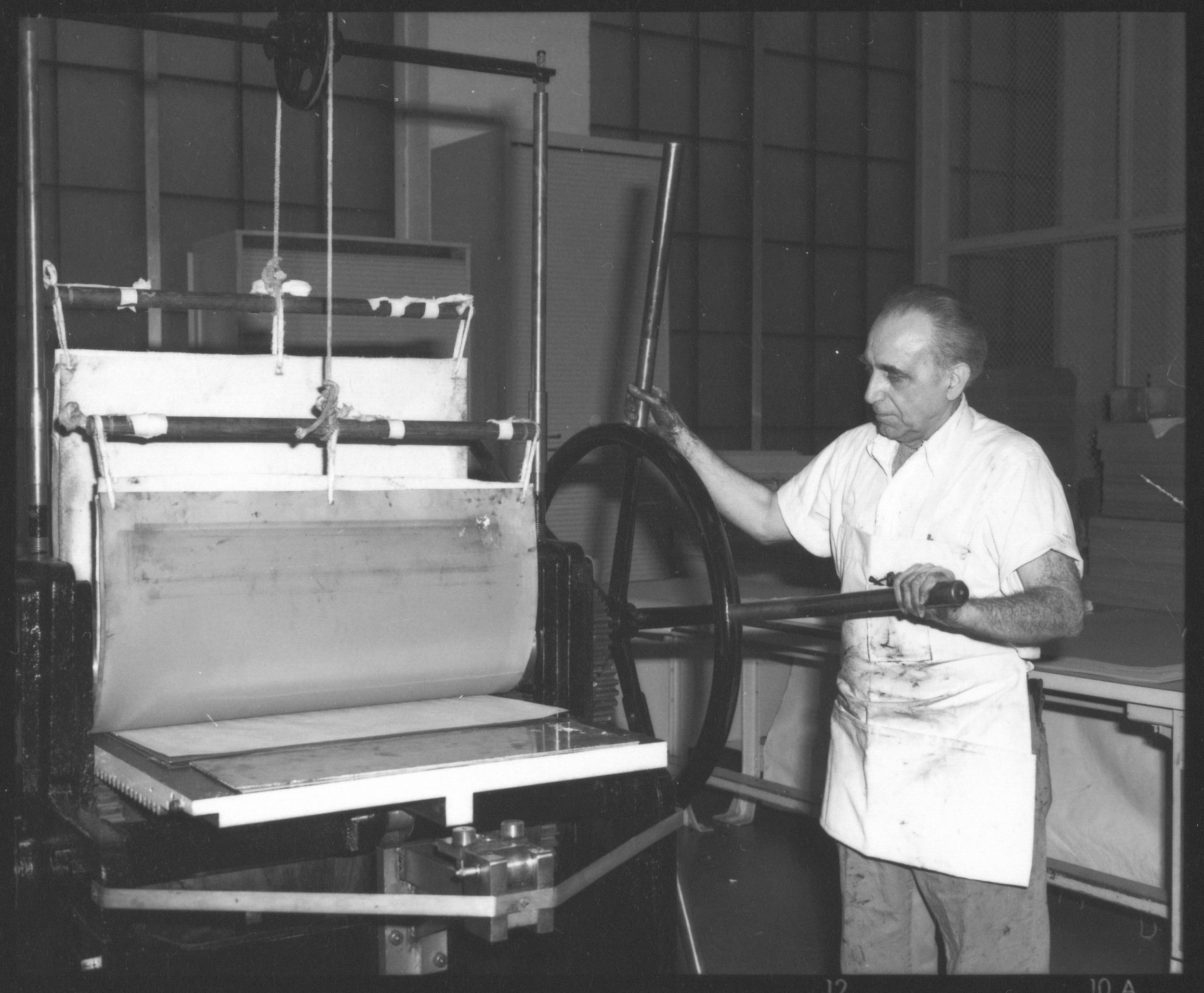
Document
Removal of Additional Ink with Cheese Cloth
4/13/1976
This primary source comes from the Records of the National Archives and Records Administration.
National Archives Identifier: 6922211
Full Citation: Removal of Additional Ink with Cheese Cloth; 4/13/1976; Records of the National Archives and Records Administration, . [Online Version, https://www.docsteach.org/documents/document/removal-of-additional-ink-with-cheese-cloth, April 26, 2024]Removal of Additional Ink with Cheese Cloth
Page 1
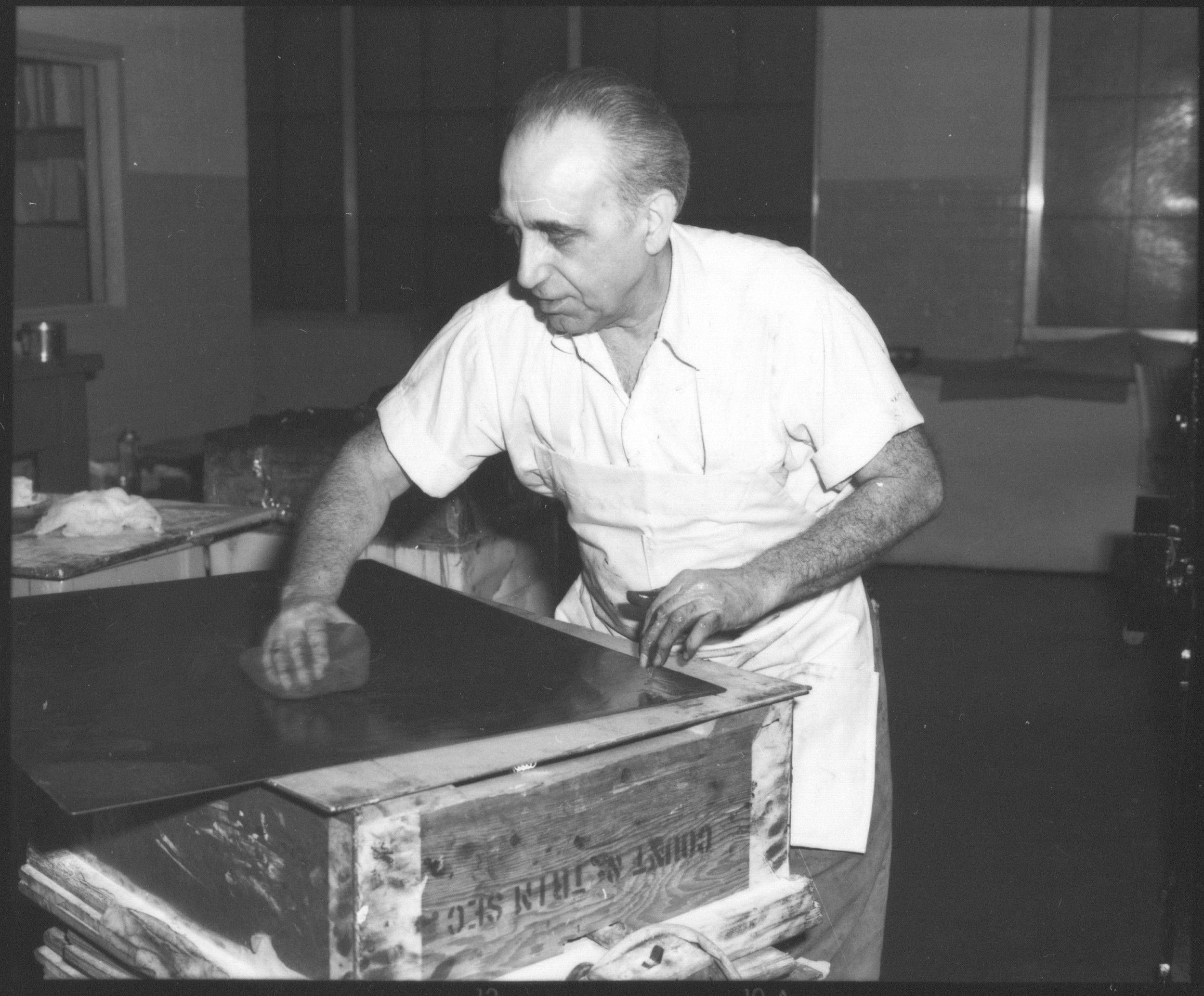
Document
Printing of Subsequent Copies
4/13/1976
This primary source comes from the Records of the National Archives and Records Administration.
National Archives Identifier: 6922235
Full Citation: Printing of Subsequent Copies; 4/13/1976; Records of the National Archives and Records Administration, . [Online Version, https://www.docsteach.org/documents/document/printing-of-subsequent-copies, April 26, 2024]Printing of Subsequent Copies
Page 1
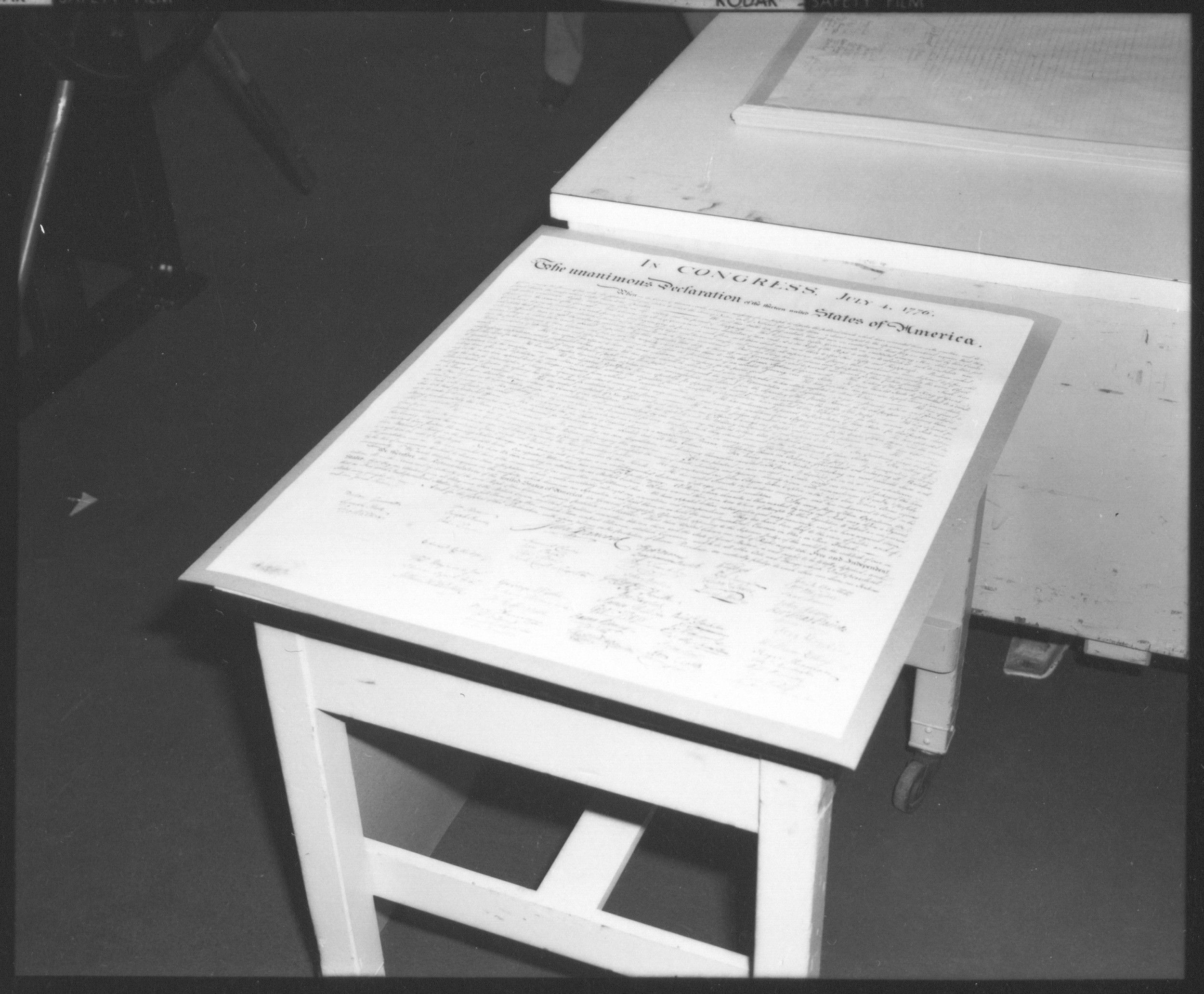
Document
Drafting the Declaration of Independence. The Committee - Franklin, Jefferson, Adams, Livingston and Sherman. Copy of engraving after Alonzo Chappel.
1776 (artwork 1857)
This is a copy of 1857 engraving by Alonzo Chappel. It shows the Committee of Five – Benjamin Franklin, Thomas Jefferson, John Adams, Robert Livingston, and Roger Sherman – drafting the Declaration of Independence during the Second Continental Congress in Philadelphia.
This primary source comes from the Records of the Bureau of Public Roads.
National Archives Identifier: 513332
Full Citation: Photograph 30-N-31(170); Drafting the Declaration of Independence. The Committee - Franklin, Jefferson, Adams, Livingston and Sherman. Copy of engraving after Alonzo Chappel.; 1776 (artwork 1857); Historical Photograph Files, 1896 - 1963; Records of the Bureau of Public Roads, ; National Archives at College Park, College Park, MD. [Online Version, https://www.docsteach.org/documents/document/drafting-declaration, April 26, 2024]Drafting the Declaration of Independence. The Committee - Franklin, Jefferson, Adams, Livingston and Sherman. Copy of engraving after Alonzo Chappel.
Page 1
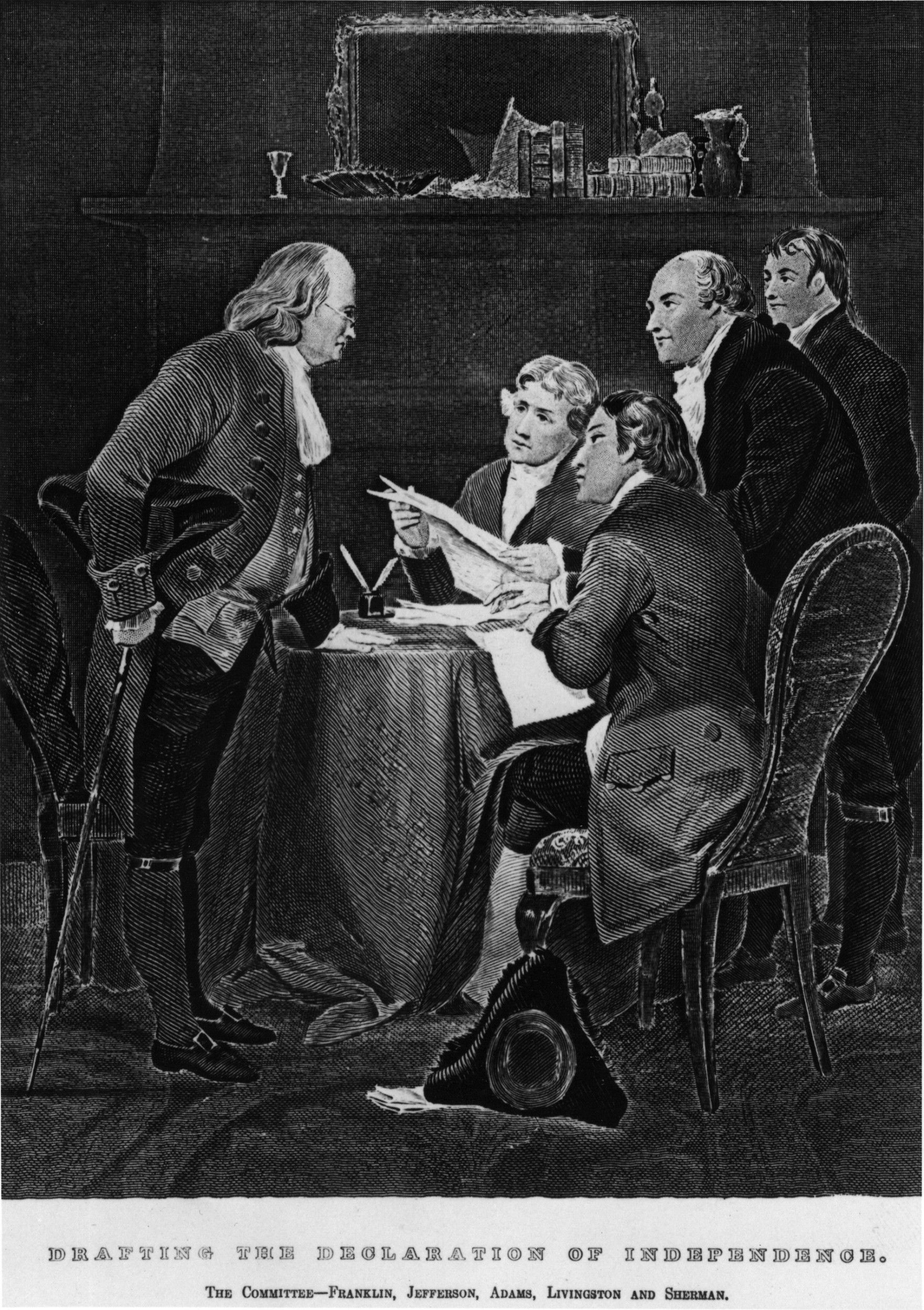
Document
Print #3 of the Declaration of Independence, 1976
7/4/1776
This print of the Declaration of Independence was created to commemorate the American Revolution Bicentennial in 1976. "Print #3" was made using the 1823 copper plate engraved by printer William J. Stone and is the most frequently reproduced version of the document. The original Declaration of Independence, now exhibited at the National Archives Building in Washington, DC, has faded badly—largely because of poor preservation techniques during the 19th century. Today, this priceless document is maintained under the most exacting archival conditions possible.
Transcript
IN CONGRESS, July 4, 1776.The unanimous Declaration of the thirteen united States of America,
When in the Course of human events, it becomes necessary for one people to dissolve the political bands which have connected them with another, and to assume among the powers of the earth, the separate and equal station to which the Laws of Nature and of Nature's God entitle them, a decent respect to the opinions of mankind requires that they should declare the causes which impel them to the separation.
We hold these truths to be self-evident, that all men are created equal, that they are endowed by their Creator with certain unalienable Rights, that among these are Life, Liberty and the pursuit of Happiness.--That to secure these rights, Governments are instituted among Men, deriving their just powers from the consent of the governed, --That whenever any Form of Government becomes destructive of these ends, it is the Right of the People to alter or to abolish it, and to institute new Government, laying its foundation on such principles and organizing its powers in such form, as to them shall seem most likely to effect their Safety and Happiness. Prudence, indeed, will dictate that Governments long established should not be changed for light and transient causes; and accordingly all experience hath shewn, that mankind are more disposed to suffer, while evils are sufferable, than to right themselves by abolishing the forms to which they are accustomed. But when a long train of abuses and usurpations, pursuing invariably the same Object evinces a design to reduce them under absolute Despotism, it is their right, it is their duty, to throw off such Government, and to provide new Guards for their future security.--Such has been the patient sufferance of these Colonies; and such is now the necessity which constrains them to alter their former Systems of Government. The history of the present King of Great Britain is a history of repeated injuries and usurpations, all having in direct object the establishment of an absolute Tyranny over these States. To prove this, let Facts be submitted to a candid world.
He has refused his Assent to Laws, the most wholesome and necessary for the public good.
He has forbidden his Governors to pass Laws of immediate and pressing importance, unless suspended in their operation till his Assent should be obtained; and when so suspended, he has utterly neglected to attend to them.
He has refused to pass other Laws for the accommodation of large districts of people, unless those people would relinquish the right of Representation in the Legislature, a right inestimable to them and formidable to tyrants only.
He has called together legislative bodies at places unusual, uncomfortable, and distant from the depository of their public Records, for the sole purpose of fatiguing them into compliance with his measures.
He has dissolved Representative Houses repeatedly, for opposing with manly firmness his invasions on the rights of the people.
He has refused for a long time, after such dissolutions, to cause others to be elected; whereby the Legislative powers, incapable of Annihilation, have returned to the People at large for their exercise; the State remaining in the mean time exposed to all the dangers of invasion from without, and convulsions within.
He has endeavoured to prevent the population of these States; for that purpose obstructing the Laws for Naturalization of Foreigners; refusing to pass others to encourage their migrations hither, and raising the conditions of new Appropriations of Lands.
He has obstructed the Administration of Justice, by refusing his Assent to Laws for establishing Judiciary powers.
He has made Judges dependent on his Will alone, for the tenure of their offices, and the amount and payment of their salaries.
He has erected a multitude of New Offices, and sent hither swarms of Officers to harrass our people, and eat out their substance.
He has kept among us, in times of peace, Standing Armies without the Consent of our legislatures.
He has affected to render the Military independent of and superior to the Civil power.
He has combined with others to subject us to a jurisdiction foreign to our constitution, and unacknowledged by our laws; giving his Assent to their Acts of pretended Legislation:
For Quartering large bodies of armed troops among us:
For protecting them, by a mock Trial, from punishment for any Murders which they should commit on the Inhabitants of these States:
For cutting off our Trade with all parts of the world:
For imposing Taxes on us without our Consent:
For depriving us in many cases, of the benefits of Trial by Jury:
For transporting us beyond Seas to be tried for pretended offences
For abolishing the free System of English Laws in a neighbouring Province, establishing therein an Arbitrary government, and enlarging its Boundaries so as to render it at once an example and fit instrument for introducing the same absolute rule into these Colonies:
For taking away our Charters, abolishing our most valuable Laws, and altering fundamentally the Forms of our Governments:
For suspending our own Legislatures, and declaring themselves invested with power to legislate for us in all cases whatsoever.
He has abdicated Government here, by declaring us out of his Protection and waging War against us.
He has plundered our seas, ravaged our Coasts, burnt our towns, and destroyed the lives of our people.
He is at this time transporting large Armies of foreign Mercenaries to compleat the works of death, desolation and tyranny, already begun with circumstances of Cruelty & perfidy scarcely paralleled in the most barbarous ages, and totally unworthy the Head of a civilized nation.
He has constrained our fellow Citizens taken Captive on the high Seas to bear Arms against their Country, to become the executioners of their friends and Brethren, or to fall themselves by their Hands.
He has excited domestic insurrections amongst us, and has endeavoured to bring on the inhabitants of our frontiers, the merciless Indian Savages, whose known rule of warfare, is an undistinguished destruction of all ages, sexes and conditions.
In every stage of these Oppressions We have Petitioned for Redress in the most humble terms: Our repeated Petitions have been answered only by repeated injury. A Prince whose character is thus marked by every act which may define a Tyrant, is unfit to be the ruler of a free people.
Nor have We been wanting in attentions to our Brittish brethren. We have warned them from time to time of attempts by their legislature to extend an unwarrantable jurisdiction over us. We have reminded them of the circumstances of our emigration and settlement here. We have appealed to their native justice and magnanimity, and we have conjured them by the ties of our common kindred to disavow these usurpations, which, would inevitably interrupt our connections and correspondence. They too have been deaf to the voice of justice and of consanguinity. We must, therefore, acquiesce in the necessity, which denounces our Separation, and hold them, as we hold the rest of mankind, Enemies in War, in Peace Friends.
We, therefore, the Representatives of the united States of America, in General Congress, Assembled, appealing to the Supreme Judge of the world for the rectitude of our intentions, do, in the Name, and by Authority of the good People of these Colonies, solemnly publish and declare, That these United Colonies are, and of Right ought to be Free and Independent States; that they are Absolved from all Allegiance to the British Crown, and that all political connection between them and the State of Great Britain, is and ought to be totally dissolved; and that as Free and Independent States, they have full Power to levy War, conclude Peace, contract Alliances, establish Commerce, and to do all other Acts and Things which Independent States may of right do. And for the support of this Declaration, with a firm reliance on the protection of divine Providence, we mutually pledge to each other our Lives, our Fortunes and our sacred Honor.
The 56 signatures on the Declaration appear in the positions indicated:
Column 1
Georgia:
Button Gwinnett
Lyman Hall
George Walton
Column 2
North Carolina:
William Hooper
Joseph Hewes
John Penn
South Carolina:
Edward Rutledge
Thomas Heyward, Jr.
Thomas Lynch, Jr.
Arthur Middleton
Column 3
Massachusetts:
John Hancock
Maryland:
Samuel Chase
William Paca
Thomas Stone
Charles Carroll of Carrollton
Virginia:
George Wythe
Richard Henry Lee
Thomas Jefferson
Benjamin Harrison
Thomas Nelson, Jr.
Francis Lightfoot Lee
Carter Braxton
Column 4
Pennsylvania:
Robert Morris
Benjamin Rush
Benjamin Franklin
John Morton
George Clymer
James Smith
George Taylor
James Wilson
George Ross
Delaware:
Caesar Rodney
George Read
Thomas McKean
Column 5
New York:
William Floyd
Philip Livingston
Francis Lewis
Lewis Morris
New Jersey:
Richard Stockton
John Witherspoon
Francis Hopkinson
John Hart
Abraham Clark
Column 6
New Hampshire:
Josiah Bartlett
William Whipple
Massachusetts:
Samuel Adams
John Adams
Robert Treat Paine
Elbridge Gerry
Rhode Island:
Stephen Hopkins
William Ellery
Connecticut:
Roger Sherman
Samuel Huntington
William Williams
Oliver Wolcott
New Hampshire:
Matthew Thornton
This primary source comes from the General Records of the Department of State.
National Archives Identifier: 1656604
Full Citation: Print #3 of the Declaration of Independence, 1976; 7/4/1776; Plates and Facsimiles of the Declaration of Independence, 1823 - 1951; General Records of the Department of State, ; National Archives at College Park, College Park, MD. [Online Version, https://www.docsteach.org/documents/document/print-of-the-declaration-of-independence, April 26, 2024]Print #3 of the Declaration of Independence, 1976
Page 1
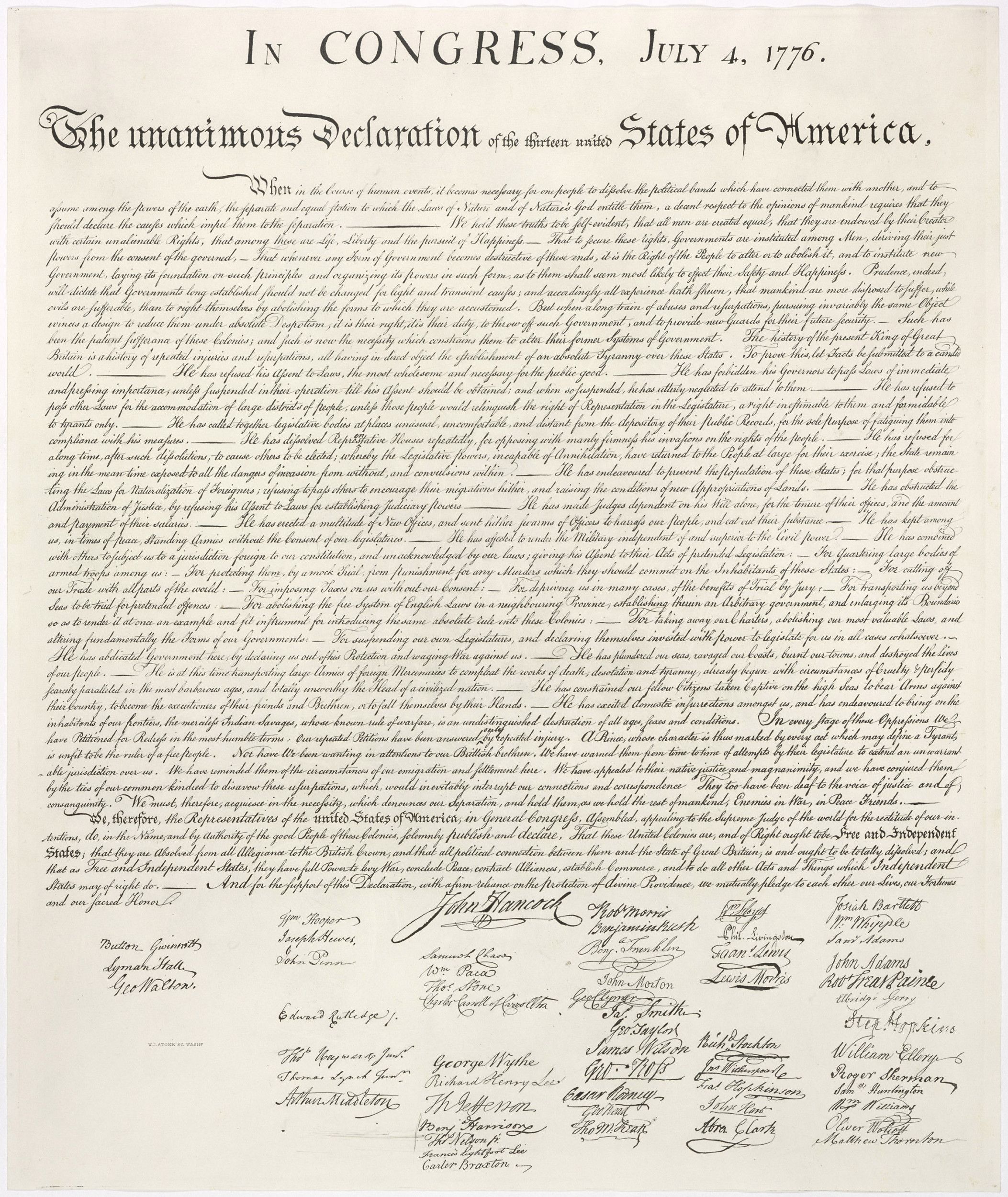
Document
Inspection of the First Printed Paper Copy
4/13/1976
This primary source comes from the Records of the National Archives and Records Administration.
National Archives Identifier: 6922228
Full Citation: Inspection of the First Printed Paper Copy; 4/13/1976; Records of the National Archives and Records Administration, . [Online Version, https://www.docsteach.org/documents/document/inspection-of-the-first-printed-paper-copy, April 26, 2024]Inspection of the First Printed Paper Copy
Page 1
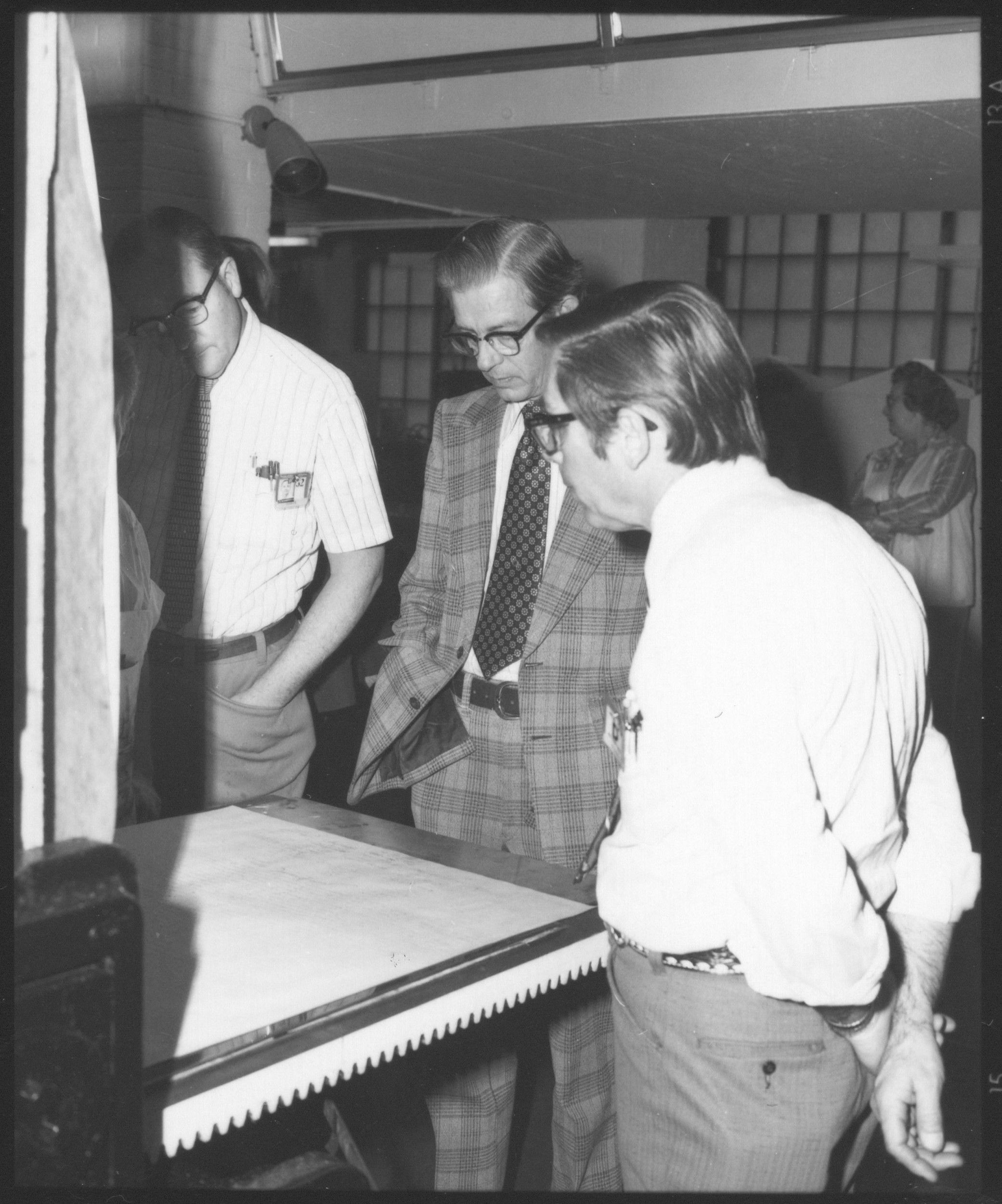
Document
Chalk Used for Final Polishing and Ink Removal before Printing
4/13/1976
This primary source comes from the Records of the National Archives and Records Administration.
National Archives Identifier: 6922223
Full Citation: Chalk Used for Final Polishing and Ink Removal before Printing; 4/13/1976; Records of the National Archives and Records Administration, . [Online Version, https://www.docsteach.org/documents/document/chalk-used-for-final-polishing-and-ink-removal-before-printing, April 26, 2024]Chalk Used for Final Polishing and Ink Removal before Printing
Page 1
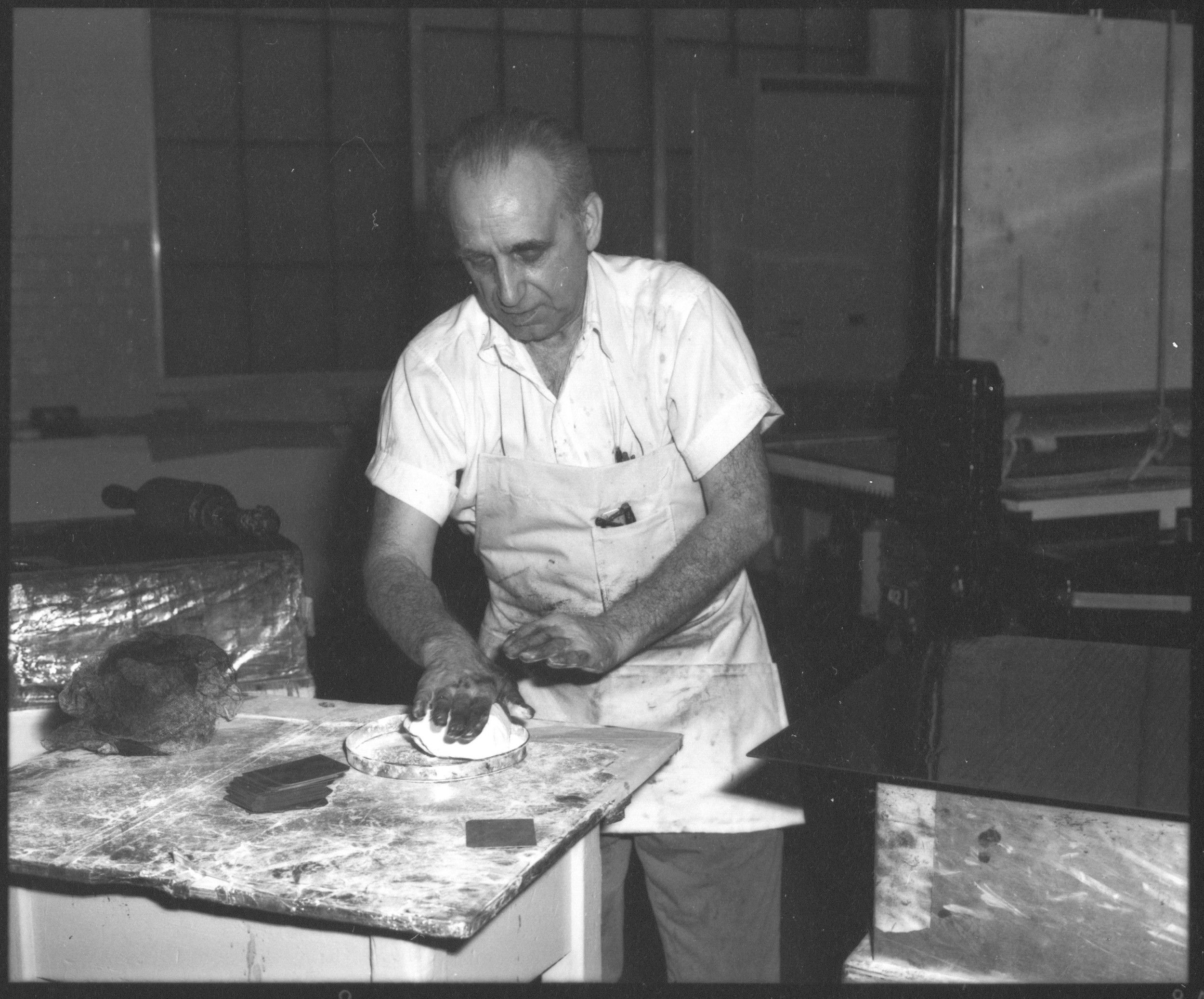
Document
Placing Paper for Printing over the Printing Plate
4/13/1976
This primary source comes from the Records of the National Archives and Records Administration.
National Archives Identifier: 6922224
Full Citation: Placing Paper for Printing over the Printing Plate; 4/13/1976; Records of the National Archives and Records Administration, . [Online Version, https://www.docsteach.org/documents/document/placing-paper-for-printing-over-the-printing-plate, April 26, 2024]Placing Paper for Printing over the Printing Plate
Page 1
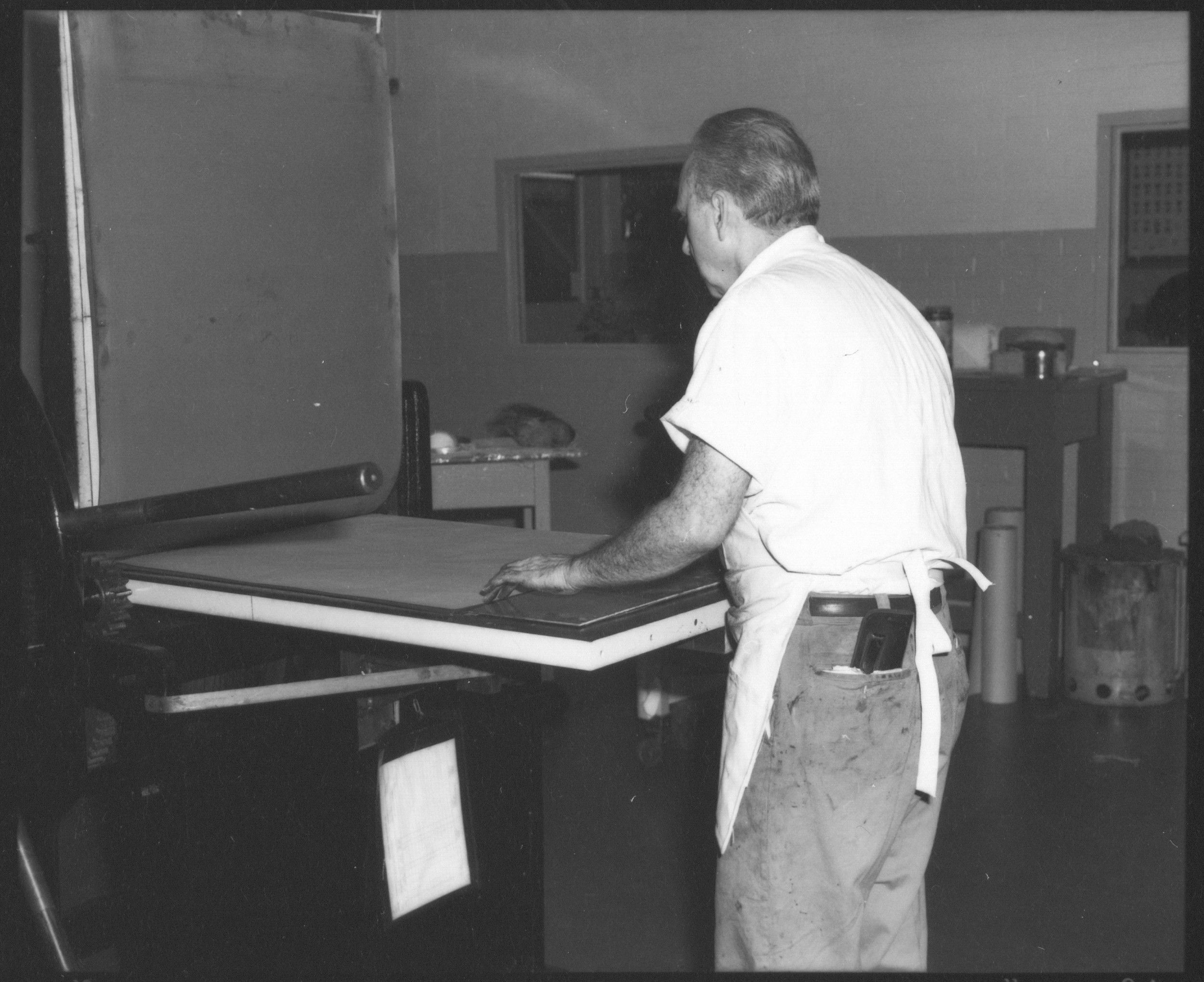
Document
Application of Ink to Printing Plate
4/13/1976
This primary source comes from the Records of the National Archives and Records Administration.
National Archives Identifier: 6922219
Full Citation: Application of Ink to Printing Plate; 4/13/1976; Records of the National Archives and Records Administration, . [Online Version, https://www.docsteach.org/documents/document/application-of-ink-to-printing-plate, April 26, 2024]Application of Ink to Printing Plate
Page 1
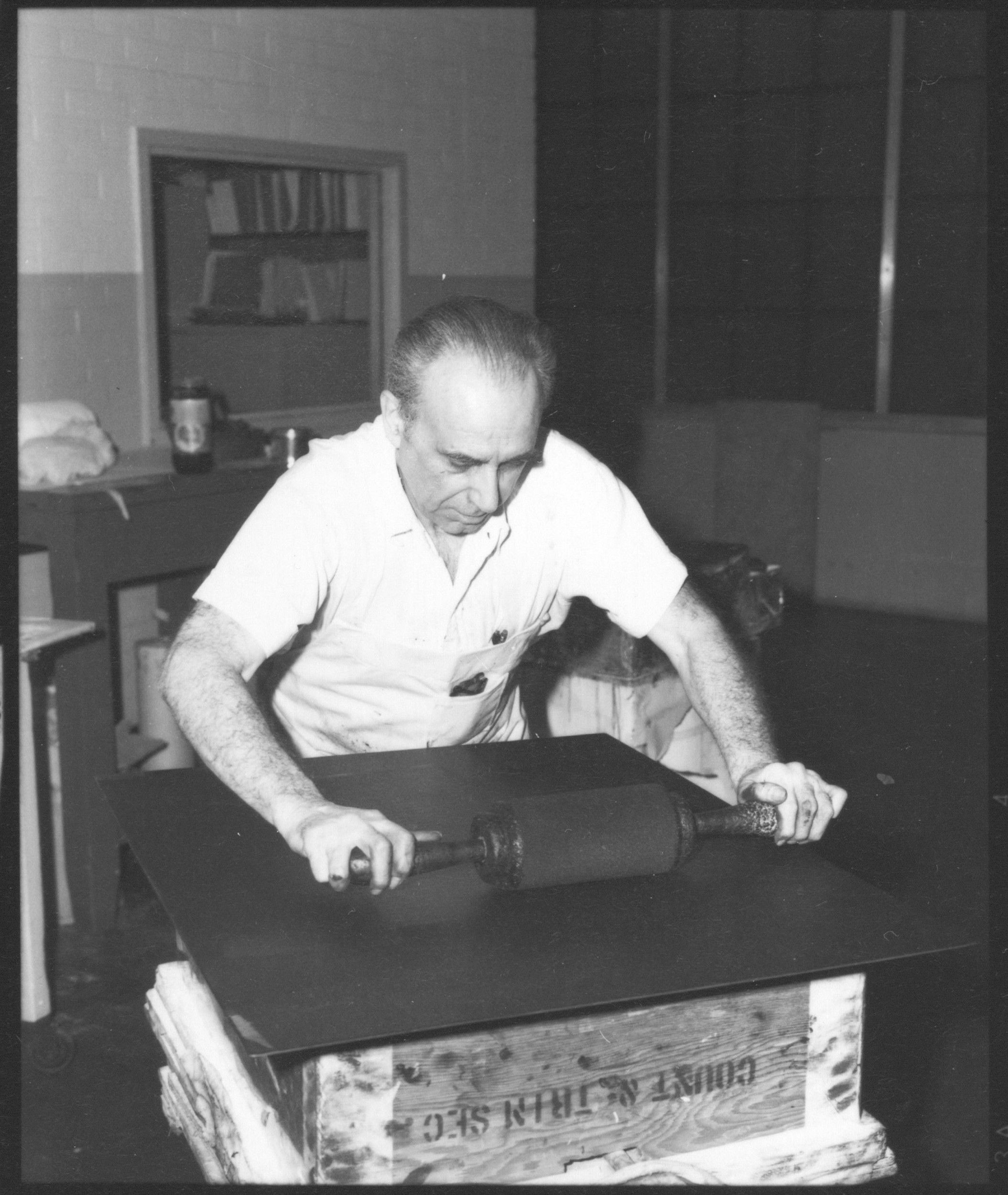
Document
The Box on which the Plate was Heated to Soften the Wax and the Printer Mr. Angelo LoVecchio
4/13/1976
This primary source comes from the Records of the National Archives and Records Administration.
National Archives Identifier: 6922202
Full Citation: The Box on which the Plate was Heated to Soften the Wax and the Printer Mr. Angelo LoVecchio; 4/13/1976; Records of the National Archives and Records Administration, . [Online Version, https://www.docsteach.org/documents/document/the-box-on-which-the-plate-was-heated-to-soften-the-wax-and-the-printer-mr-angelo-lovecchio, April 26, 2024]The Box on which the Plate was Heated to Soften the Wax and the Printer Mr. Angelo LoVecchio
Page 1
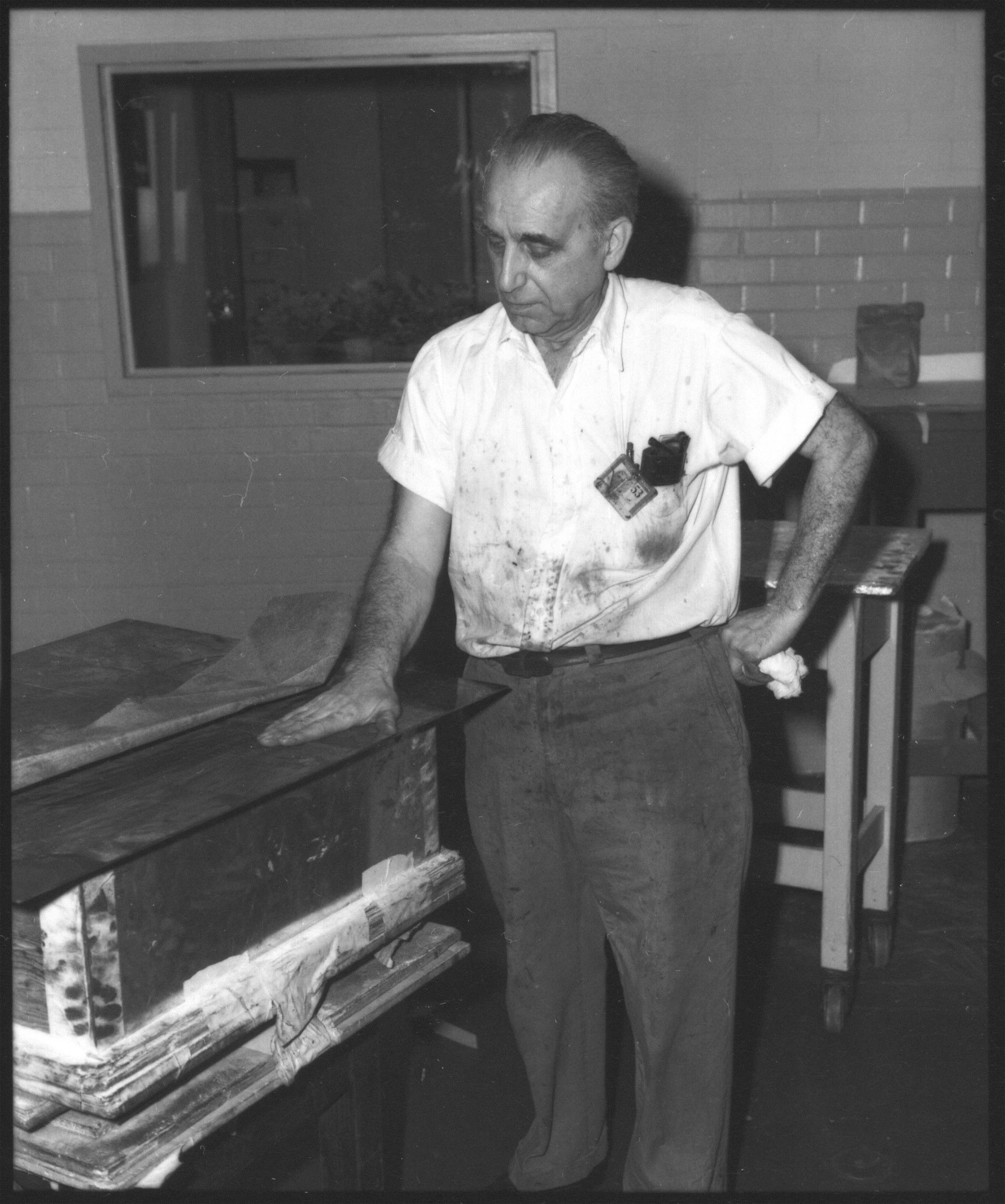
Document
Engraving of the Declaration of Independence
1823
As early as 1817, the Declaration of Independence had begun to fade. In 1820 Secretary of State John Quincy Adams asked William J. Stone, a Washington, DC, printer and engraver, to make a copper engraving reproducing the size, text, lettering, and signatures of the original. Stone finished his printing plate in 1823 and printed 200 copies from it on parchment for Federal, state, and local officials, as well as for the descendants of the original signers. He was later allowed to print and sell an unknown number of copies. In 1976, printers from the Bureau of Engraving and Printing struck seven additional prints from Stone’s copperplate to commemorate the Bicentennial of the American Revolution.
This primary source comes from the General Records of the Department of State.
National Archives Identifier: 1656605
Full Citation: Engraving of the Declaration of Independence; 1823; Plates and Facsimiles of the Declaration of Independence, 1823 - 1951; General Records of the Department of State, ; National Archives at College Park, College Park, MD. [Online Version, https://www.docsteach.org/documents/document/engraving-declaration-of-independence, April 26, 2024]Engraving of the Declaration of Independence
Page 1
